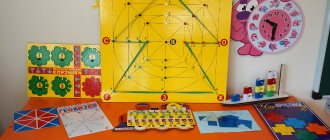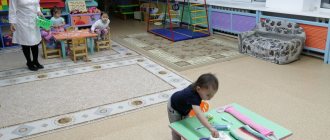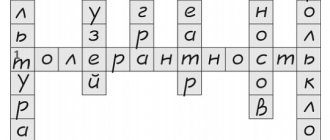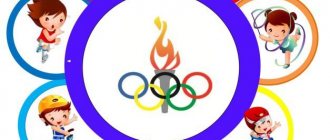Play is the main activity of a child.
Play as the main activity in kindergarten.
A kindergarten is an institution where a child is helped to learn a lot about the world around him. It should be noted that a child absorbs a lot of information primarily during the process of play, and therefore it must be emphasized that play is the leading type of activity in preschool children. It is in the game that the most complete development of all processes occurs, which help to master additional information when studying. During the game, every child learns the norms of human life and activity. Play is the most accessible type of activity for children, a way of processing impressions received from the surrounding world. The game clearly reveals the characteristics of the child’s thinking and imagination, his emotionality, activity, and developing need for communication. An interesting game increases the child’s mental activity, and he can solve a more difficult problem than in class. But this does not mean that classes should be conducted only in the form of games. Play is only one of the methods, and it gives good results only in combination with others: observations, conversations, reading and others. While playing, children learn to apply their knowledge and skills in practice and use them in different conditions. Play is an independent activity in which children interact with peers. They are united by a common goal, joint efforts to achieve it, and common experiences. Play experiences leave a deep imprint on the child’s mind and contribute to the formation of good feelings, noble aspirations, and collective life skills.
The game occupies a large place in the system of physical, moral, labor and aesthetic education. A child needs active activities that help improve his vitality, satisfy his interests and social needs. The game is of great educational importance; it is closely connected with learning in the classroom and with observations of everyday life. They learn to solve game problems on their own, find the best way to implement their plans, use their knowledge, and express it in words. Often a game serves as an occasion for imparting new knowledge and broadening one’s horizons. With the development of interest in the work of adults, in social life, and in the heroic deeds of people, children begin to have their first dreams of a future profession and the desire to imitate their favorite heroes. All this makes play an important means of creating a child’s orientation, which begins to develop in preschool childhood.
Gaming activities perform the following functions:
entertaining (this is the main function of the game - to entertain, give pleasure, inspire, arouse interest);
communicative: mastering the dialectics of communication;
self-realization in the game as a testing ground for human practice;
game therapy: overcoming various difficulties that arise in other types of life activities;
diagnostic: identifying deviations from normative behavior, self-knowledge during the game;
correction function: introducing positive changes into the structure of personal indicators;
interethnic communication: the assimilation of socio-cultural values common to all people;
socialization: inclusion in the system of social relations, assimilation of the norms of human society.
There are three types of games:
1) games initiated by the child (creative)
2) games initiated by an adult with ready-made rules (didactic, outdoor games)
3) folk games (created by the people).
Creative games make up the richest typical group of games for preschoolers. They are called creative because children themselves determine the purpose, content and rules of the game, mainly reflecting the life around them, human activities and relationships between people. A significant part of creative games are role-playing games “at someone” or “at something”. Children depict people, animals, the work of a doctor, a builder, etc. Realizing that the game is not real life, the kids, meanwhile, truly experience their roles, openly reveal their attitude to life, their thoughts and feelings, and perceive the game as an important matter. Saturated with vivid emotional experiences, role-playing games leave a deep imprint in the child’s mind, which affects his attitude towards people, their work, and life in general. Role-playing games also include games with elements of labor and artistic and creative activities.
Games with rules. These games provide an opportunity to systematically train children in developing certain skills; they are very important for physical and mental development, character development and will. Without such games, it would be difficult to carry out educational work in kindergarten. Children learn games with rules from adults and from each other. Many of them are passed down from generation to generation, but educators, when choosing a game, must take into account the requirements of modern times. Based on the content and methods of playing games with rules, they are divided into two groups: didactic and mobile.
Didactic games contribute mainly to the development of the child’s mental abilities, since they contain mental tasks, the solution of which is the meaning of the game. They also contribute to the development of the child’s senses, attention, memory, and logical thinking. Note: that a didactic game is an effective method of consolidating knowledge, it should not at all turn into a learning activity. A game captivates a child only if it gives joy and pleasure. An indispensable condition for a didactic game are rules, without which the activity becomes spontaneous. In a well-designed game, it is the rules, not the teachers, that control children's behavior. The rules help all participants in the game to be and act in the same conditions (children receive a certain amount of game material, determine the order of actions of the players, and outline the range of activities of each participant).
Outdoor games are important for the physical education of preschoolers, as they contribute to their harmonious development, satisfy the children’s need for movement, and help enrich their motor experience. Two types of outdoor games are carried out with preschool children - story games and game exercises (non-story games). Story-based outdoor games are based on the child’s experience, his idea of the world around him (the actions of people, animals, birds), which they reproduce with movements characteristic of one image or another. The movements that children perform during the game are closely related to the plot. Most story games are collective, in which the child learns to coordinate his actions with the actions of other players, not to be capricious, and to act in an organized manner, as required by the rules.
Folk games are games that originate from ancient times; they are built taking into account ethnic characteristics (round dances, fun, games with folk toys, etc.). They are an integral part of a child’s life in a modern preschool institution, an important source of assimilation of universal human values. The developmental potential of these games is ensured not only by the presence of appropriate toys, but also by the special creative aura that an adult must create. Folk games reflect people’s lives, their way of life, national traditions, they contribute to the education of honor, courage, courage, etc. To this end, children are asked to ask their mothers, fathers, and grandparents what games they played as children. There are individual, collective, plot-based, everyday, theatrical games and outdoor fun games. Particularly popular among children are games without a specific plot, built on game tasks that contain a lot of cognitive material (games “magic wand”, “Blind Man’s Bluff”, “Geese”) geese", etc.). In these games, the child is required to react quickly and correctly.
To organize games, it is important to create an object-based gaming environment. An important requirement is the developmental nature and compliance with such principles as the child’s exercise of the right to play (free choice of a toy, theme, plot of the game, place and time of its implementation); the universality of the subject-game environment, so that children, together with teachers, can prepare and change it, transform it according to the design of the game, content, and development prospects; systematicity, that is, the optimal relationship between the individual elements of the game and other objects, etc.
The subject-play environment includes: a large playground, play equipment, toys, a variety of play paraphernalia, and play materials. All these gaming tools are not located in an abstract space, but in a playroom, gym, or playground. There should be nothing unnecessary in the interior; all play equipment should be safe for children.
To conduct games, game centers are created: general (a set of various types of toys), dramatic (sets of equipment, simple decorations, clothing items and costumes for dramatization games, staging) for board and construction games (construction sets: wooden, plastic, metal, boxes, pads and other materials, tools and auxiliary equipment). All equipment should be convenient and easy to transform. Children can independently choose a game, change the center, moving from one game to another.
The issues of organizing play activities for preschoolers and preparing teachers for pedagogical management of play have always occupied a leading place in the work of any preschool institution. In kindergarten, children's games are given a significant place in the daily routine. Educators are constantly focused on updating the educational environment, selecting play equipment, and children's fiction. But this is not enough for children to play. Practice shows that while a child is not very independent, he does not know how and does not like to play. Independence in play even among older preschoolers is relative; the gaming culture is not always high. Therefore, children need support in developing ideas, clarifying game actions, and assigning roles. And here there is nothing better than the teacher himself becoming a playing partner. Teachers need to support the principle of organizing play: play together with children, play with children throughout preschool age. In kindergarten, teachers use games when working with students that help correct children’s behavior, rather than using punishments, prohibitions, or moralizing.
The main tasks of the teacher in relation to all children in connection with their upbringing in the game are as follows: to develop and direct the child’s play activity, determination, influence the content of his games, the choice of role; help everyone join the team, establish good relationships with comrades; monitor the child’s behavior and feelings in the game, evoke positive emotions and experiences. Unity of educational work is required in play and other activities in the classroom and in everyday life. In the game, moral habits and norms of behavior developed in life are applied and developed. Group play skills transfer to other activities; for example, in collective work, children independently agree on the distribution of responsibilities and are divided into groups, as they are used to doing in a game.
Article. Features of play activity in early preschool age.
Article. Features of play activity in early preschool age.
Preschool childhood is the period of initial formation of personality, the period of development of personal mechanisms of behavior. By the age of three, a child has come a long way in his mental development. He already moves freely in space, speaks well, understands the speech of others, is consciously guided (or also consciously not guided) by the demands and instructions of adults, shows initiative and independence.
Many teachers and psychologists who have studied the play activity of preschoolers have noted that for the emergence and complication of a child’s play activity, guidance from educators is most essential. So N.M. Aksarina, based on her research, came to the conclusion that three conditions are necessary for the appearance of a game: 1) the presence of various impressions from the surrounding reality; 2) the availability of various toys and educational aids; 3) frequent communication between the child and the adult.
The direct influence of adults on the child is decisive.
Play is social by origin and nature. Its occurrence is not associated with the action of some internal, innate, instinctive forces, but with the very specific conditions of a child’s life in society. In order for preschool children to play, they must have vivid, emotionally charged ideas about the surrounding reality. At the same time, the entire reality surrounding the child can be conditionally divided into the world of objects and the world of human activity and relationships. Research by N.V. Koroleva showed the special sensitivity of children precisely to the sphere of human activity and relationships.
In play activities, certain forms of communication between children arise. The game requires from the child such qualities as initiative, sociability, and the ability to coordinate his actions with the actions of a group of peers in order to establish and maintain communication.
Elements of communication appear very early, when children do not yet know how to build a detailed story game, but play individually - each on his own. Typically, during this period of play development, the child is focused on his own actions and pays little attention to the actions of the other child. However, from time to time, fed up with his own play, the baby begins to look at how another child is playing. Interest in a peer's game leads to attempts to establish certain relationships. The first forms of relationships are manifested in the child’s desire to get closer to another child, to play next to him, in the desire to give up part of the space occupied for his own play, in a timid smile given to another at the moment when the children meet their gaze. Such light contacts do not change the very essence of the game: each child plays on his own, observing “distance discipline” as much as possible.
At the next stage (at three to four years), the child begins to communicate more intensively with his peers. He is actively looking for reasons for joint activities and for establishing relationships. The duration of communication in this case depends on the extent to which the child has mastered the playful use of objects and the ability to create and implement a play plan. During the period when play consists only of performing the most basic actions with toys (rolling a car by a rope, pouring sand from a bucket), the child’s interaction with a peer is short-term. The content of the game does not yet provide grounds for sustainable communication. At this stage, children can exchange toys and help each other; one may rush to help another correctly position an overturned car, and the other, correctly understanding his impulse, will kindly accept this service.
With the development of gaming skills and the complication of gaming plans, children begin to engage in longer-term communication. In playing together, children learn the language of communication, mutual understanding and mutual assistance, and learn to coordinate their actions with the actions of others. Bringing children together to play together helps to further enrich and complicate the content of games. Each child's experience is limited. He is familiar with a relatively narrow range of actions performed by adults. In the game there is an exchange of experience. Children learn from each other and turn to adults for help. As a result, games are becoming more diverse. The complication of the content of games leads, in turn, not only to an increase in the number of participants in the game, but also to the complication of real relationships, to the need for more clear coordination of actions.
With the development of the ability to create a detailed plot plan and plan joint activities, the child comes to the need to find a place among the players, establish connections with them, understand the desires of the players and balance their own desires and capabilities with them.
The above allows us to conclude that the central point of any game is the reproduction of the activities of adults and their relationships. This entry into human relationships and mastering them is the essence of the game. This is what determines the great influence that play has on the development of the entire personality of a preschool child, on the development of all aspects of his mental life.






